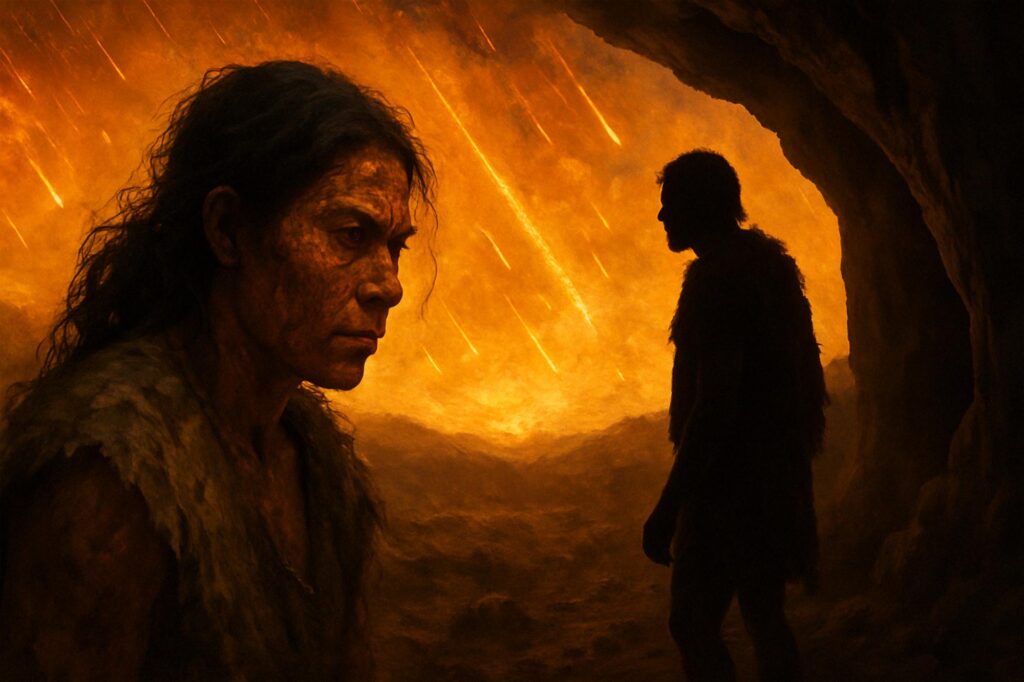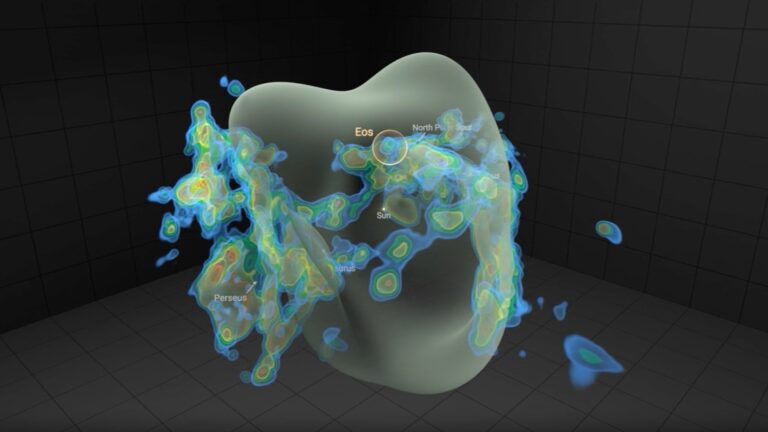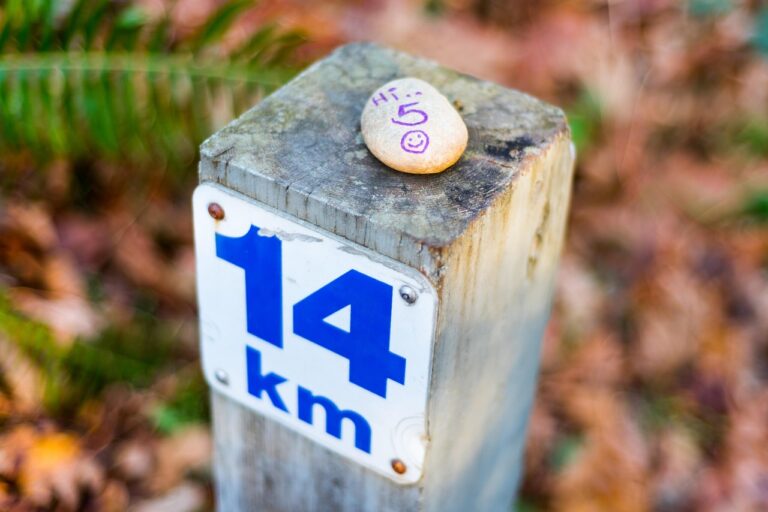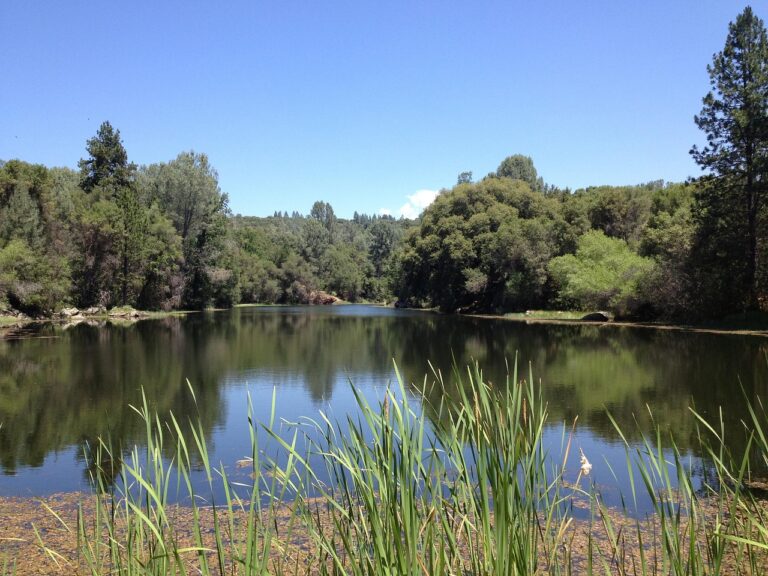
Ancient Sunscreen: How Early Humans Survived a Solar Storm Apocalypse 41,000 Years Ago – SciTechDaily
2025-04-20T03:59:06Z
About 41,000 years ago, Homo sapiens may have survived increased solar radiation caused by a weakening magnetic field by using sunscreen-like ochre, tailored clothing, and caves. Neanderthals, lacking these technologies, likely faced greater exposure and disa…
About 41,000 years ago, Homo sapiens may have survived increased solar radiation caused by a weakening magnetic field by using sunscreen-like ochre, tailored clothing, and caves. Neanderthals, lacking these technologies, likely faced greater exposure and disappeared around the same time.
Ancient Homo sapiens may have survived a spike in solar radiation about 41,000 years ago thanks to early technologies like sunscreen, tailored clothing, and shelter in caves, according to new research from the University of Michigan.
The study, published in Science Advances by researchers from Michigan Engineering and the U-M Department of Anthropology, suggests that these innovations helped protect Homo sapiens in Europe during a period of intense environmental stress, when Earth’s magnetic field temporarily weakened.
During this time, the magnetic North Pole shifted over Europe as part of a geomagnetic excursion, a natural but temporary reversal in Earth’s magnetic field that has occurred roughly 180 times in geological history. Although the magnetic poles didn’t fully reverse, the weakening of the field allowed more ultraviolet (UV) radiation to reach the planet’s surface, triggering widespread auroras and increasing solar exposure globally.
In contrast, Neanderthals, who lacked similar protective technologies, disappeared from the fossil record around 40,000 years ago, shortly after this event. The researchers propose that this technological gap may have played a role in their extinction.
Around the same time, Homo sapiens appear to have started making tailored clothing and using ochre, a mineral that has sun-protective properties when applied to the skin, with greater frequency. These behaviors could have contributed to their spread throughout Europe and Asia at a time when the Neanderthal population was declining.
“In the study, we combined all of the regions where the magnetic field would not have been connected, allowing cosmic radiation, or any kind of energetic particles from the sun, to seep all the way in to the ground,” said Agnit Mukhopadhyay, lead author and U-M research affiliate in climate and space sciences and engineering.
“We found that many of those regions actually match pretty closely with early human activity from 41,000 years ago, specifically an increase in the use of caves and an increase in the use of prehistoric sunscreen.”
Wandering poles
Earth’s magnetic field is created by its rotation, and by extension, the rotation of its core. The core, which is composed of molten iron, generates electrical currents, which extend in a halo around the globe. This halo helps protect Earth from cosmic radiation—the stuff that thins Earth’s ozone layer and lets in more UV light. The interaction of these particles with Earth’s magnetic field results in aurora as well.
Mukhopadhyay began building models of this interaction using the Space Weather Modeling Framework, a versatile numerical tool developed and maintained by the U-M Center for Space Environment Modeling, to study the sun, heliosphere and planetary space environments, including that of Earth.
The sun continually throws hot gases and charged particles toward Earth, which, because of their extremely high temperatures, act as a plasma system. Mukhopadhyay developed a model that predicts how this plasma system interacts with Earth’s magnetic field, ultimately driving the formation of the aurora.
This magnetic field has a north and south orientation: the North and South poles. The orientation of the magnetic field is why you typically only see aurora at the North and South poles, where magnetic fields are the strongest. But occasionally throughout history, these poles wander from their traditional geographic positions. These are called “geomagnetic excursions,” says Mukhopadhyay. The most recent event is called the Laschamps excursion, which occurred about 41,000 years ago.
Working with Sanja Panovska, a researcher at Germany’s GFZ Helmholtz Centre for Geosciences, Mukhopadhyay created a 3D reconstruction of Earth’s geospace system. To do this, the researchers combined three separate models: one global model that reconstructs the geomagnetic field during the Laschamps excursion, a model of the space plasma environment around Earth, and a model that predicted what Earth’s aurora looked like at the time. The resulting 3D model showed where charged particles were able to slip through Earth’s geomagnetic field.
The researchers found that during the Laschamps excursion, Earth’s magnetic field reduced in size to about 10% of its current strength. This allowed Earth’s magnetic poles to droop down near the equator and for its magnetic field lines to expand. This would have also allowed the aurora to be seen all over Europe and into northern Africa.
The researchers then laid their 3D map of Earth’s space system over the world, and found that the time period of the Laschamps excursion—which lasted from about 41,000 to 39,000 BP—coincided with periods of change for groups of humans living on the planet
Cosmic rays, radiation, and survival
Neanderthals and Homo sapiens coexisted in Europe, with Homo sapiens—often called anatomically modern humans—arriving roughly 56,000 years ago, says Raven Garvey, U-M associate professor of anthropology. By about 40,000 years ago, Neanderthals were no longer identified as a species in Europe.
“What some of the differences are between these species, between Neanderthals and anatomically modern humans, that might account for that disappearance has been a major anthropological question for decades,” Garvey said.
Clothing may have been a contributing factor, she said. The technological means of producing clothing that fitted to the body has been discovered at archaeological sites associated with anatomically modern humans, but not necessarily Neanderthals.
However, at sites associated with anatomically modern humans, archaeologists have found not only scrapers used in hide production, but also needles and awls—items associated with sewing. According to Garvey, tailored clothing has a twofold benefit: It was significantly warmer, and the added warmth meant that people could travel farther from their hearths and shelters in search of food.
Tailored clothing could have also provided another unintended benefit—protection from sun damage, she said.
There are multiple detrimental effects of solar radiation, including ocular pathologies and folate depletion (which can lead to birth defects and increased infant mortality), “so having protection against solar radiation would also have conferred significant advantage to anyone who possessed it,” Garvey said.
Homo sapiens may have also ramped up their use of ochre, a naturally occurring pigment composed of iron oxide, clay and silica that has been used by many species of hominins for a very long time. People used it to paint objects, cave walls, and even to decorate their bodies.
“There have been some experimental tests that show it has sunscreen-like properties. It’s a pretty effective sunscreen, and there are also ethnographic populations that have used it primarily for that purpose,” Garvey said. “Its increased production and its association primarily with anatomically modern humans (during the Laschamps) is also suggestive of people’s having used it for this purpose as well.”
Finding caution in the (solar) wind
The researchers are careful to underscore that their findings aren’t definitive. However, they are a new way to look at already existing data.
“I think it’s important to note that these findings are correlational and (ours is a) meta-analysis, if you will,” Garvey said. “But I think it is a fresh perspective on these data in light of the Laschamps excursion.”
In addition to examining how previous excursions might have affected humans long ago, Mukhopadhyay said the 3D model offers people a way to predict how excursions might affect us in the future.
“If such an event were to happen today, we would see a complete blackout in several different sectors,” he said. “Our communication satellites would not work. Many of our telecommunication arrays, which are on the ground, would be severely affected by the smallest of space weather events, not to mention the human impacts which would also play a pretty massive role in our day-to-day lives.”
Mukhopadhyay also pointed out that their work also highlights that people were still able to survive on a planet whose atmosphere looked a lot different than ours does today, and this has implications for the search for life on planets other than Earth.
“Many people say that a planet cannot sustain life without a strong magnetic field,” he said. “Looking at prehistoric Earth, and especially at events like this, helps us study exoplanetary physics from a very different vantage point. Life did exist back then. But it was a little bit different than it is today.”
Reference: “Wandering of the auroral oval 41,000 years ago” by Agnit Mukhopadhyay, Sanja Panovska, Raven Garvey, Michael W. Liemohn, Natalia Ganjushkina, Austin Brenner, Ilya Usoskin, Mikhail Balikhin and Daniel T. Welling, 16 April 2025, Science Advances.
DOI: 10.1126/sciadv.adq7275
Study co-authors also include Michael Liemohn, Daniel Welling, and Austin Brenner of Michigan Engineering, Natalia Ganjushkina of both Michigan Engineering and the Finnish Meteorological Institute, Ilya Usoskin of the University of Oulu, and Mikhail Balikhin of the University of Sheffield.
Auto-posted from news source






